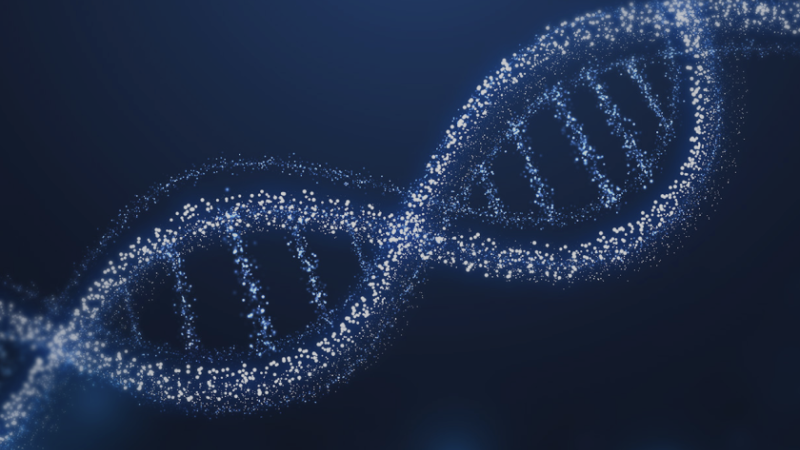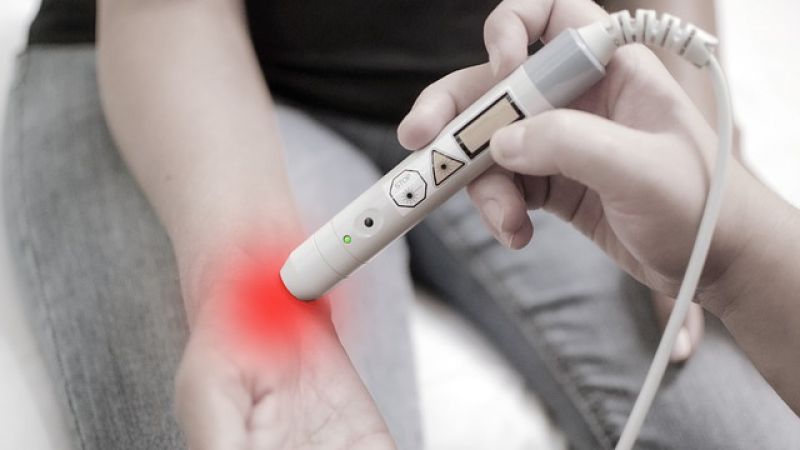
Understanding the Intricacies of the Free Radical Theory
The Free Radical Theory is a concept within the field of biology that seeks to explain the processes underlying aging and disease. It posits that free radicals, highly reactive molecules, play a crucial role in cellular damage, leading to various health issues. To understand this theory comprehensively, it is essential to explore its basics, the role of free radicals in the body, the controversies surrounding it, its implications for health and wellness, and the future directions in free radical research.
The Basics of the Free Radical Theory
Defining Free Radicals
Free radicals are unstable atoms or molecules with an unpaired electron in their outermost shell. This unpaired electron makes them highly reactive, as they seek to pair their electron with another atom or molecule, causing damage in the process. Common examples of free radicals include reactive oxygen species (ROS), such as superoxide anion, hydroxyl radical, and hydrogen peroxide.
These free radicals are produced as natural byproducts of various metabolic processes in the body, including cellular respiration and immune system functions. However, external factors such as pollution, radiation, and certain lifestyle choices can increase free radical production.
When it comes to understanding the impact of free radicals on health, it is important to consider the delicate balance between free radicals and antioxidants.
Antioxidants are molecules that neutralize free radicals, preventing them from causing damage. The body has its antioxidant defense system, but it can be overwhelmed by excessive free radical production or a lack of antioxidants. Now, let’s dive deeper into the fascinating world of free radicals and explore the origin of the Free Radical Theory.
The Origin of the Free Radical Theory
“Accept the fact that you’re not going to live forever… if you work at it, you might make 100.”
Dr. Denham Herman, Scientist, Free Radical Theory and Aging
(Paul Viletto, New York Times, 2014)
Dr. Denham Harman1 first proposed the Free Radical Theory in the 1950s as a way to explain the aging process. Harman hypothesized that free radicals, by causing damage to cells and DNA over time, contribute to aging and age-related diseases. According to Harman, as cells and DNA accumulate oxidative damage from free radicals, their functional abilities decline, leading to the onset of age-related diseases like cancer, cardiovascular diseases, and Alzheimer’s disease.
Since its inception, the Free Radical Theory has sparked numerous studies and research efforts to further understand the role of free radicals in the aging process and disease development. Scientists have discovered that free radicals not only cause damage to cellular components but also play a crucial role in signaling pathways and gene expression.
Furthermore, it has become evident that the impact of free radicals extends beyond aging and age-related diseases. Free radicals have been implicated in various health conditions, including inflammation, neurodegenerative disorders, autoimmune diseases, and even the development of certain cancers.
As researchers continue to unravel the complexities of free radicals, new insights into potential therapeutic strategies are emerging. Antioxidant-rich diets, lifestyle modifications, and the development of targeted antioxidant therapies are among the areas of focus in combating the detrimental effects of free radicals.
In conclusion, the Free Radical Theory provides a valuable framework for understanding the role of free radicals in the aging process and disease development. By delving into the intricacies of free radicals, researchers are paving the way for innovative approaches to promote healthy aging and combat age-related diseases.
The Role of Free Radicals in the Body
Free radicals are highly reactive molecules that play a complex role in the body. While they are necessary for certain physiological processes, an imbalance in their production and elimination can lead to detrimental effects on cellular health.
Free Radicals and Cellular Damage
When free radicals are present in excess, they can initiate a chain reaction known as oxidative stress. During oxidative stress, free radicals attack and damage essential components of cells, such as lipids, proteins, and DNA. This oxidative damage can lead to cellular functioning disruptions and contribute to various diseases’ development. For example, when free radicals attack lipids in cell membranes, they can cause lipid peroxidation, a process that leads to membrane damage and loss of membrane integrity. This can result in compromised cell function and increased susceptibility to diseases.
In addition to lipid peroxidation, free radicals can also directly damage proteins. By oxidizing amino acid residues in proteins, free radicals can alter their structure and impair their function. This can have wide-ranging effects on cellular processes, including enzyme activity, signal transduction, and gene expression. Furthermore, free radicals can cause DNA damage, including DNA strand breaks and base modifications. When DNA is damaged, it can lead to mutations and genetic instability, increasing the risk of diseases such as cancer.
Moreover, oxidative stress caused by free radicals can also trigger inflammation, which plays a key role in the progression of chronic diseases, including arthritis, diabetes, and neurodegenerative disorders. Inflammatory cells, such as macrophages, release reactive oxygen species (ROS) to combat pathogens. However, if the production of ROS is not tightly regulated, it can lead to chronic inflammation and tissue damage.
The Impact of Free Radicals on Aging
As proposed by the Free Radical Theory of Aging, the accumulation of oxidative damage over time contributes to the aging process. Free radicals can cause cumulative damage to cellular components, including lipids, proteins, and DNA.
When free radicals attack lipids, it can lead to the formation of lipid peroxides, which are highly reactive and can further propagate oxidative damage. This lipid peroxidation can contribute to the development of age-related diseases, such as cardiovascular disease and neurodegenerative disorders.
Additionally, free radicals can also directly damage proteins involved in cellular repair and maintenance. This can impair the cell’s ability to repair DNA damage and maintain proper protein function, leading to cellular dysfunction and potentially increasing the risk of age-related diseases.
Furthermore, free radicals can activate certain genes that promote aging. These genes, known as senescence-associated secretory phenotype (SASP), produce pro-inflammatory molecules that contribute to tissue deterioration and senescence. The activation of SASP genes by free radicals can further exacerbate the aging process and increase the risk of age-related diseases.
In conclusion, while free radicals are essential for certain physiological processes, an imbalance in their production and elimination can lead to cellular damage and contribute to the development of various diseases. Understanding the role of free radicals in the body is crucial for developing strategies to mitigate their harmful effects and promote overall health and well-being.
Biochemistry & Free Radical Theory
The Controversies Surrounding the Free Radical Theory
The Free Radical Theory, which proposes that oxidative damage caused by free radicals contributes to aging and age-related diseases, has gained widespread acceptance in the scientific community. However, like any theory, it has faced criticism and has undergone revisions in recent years.
Criticisms of the Free Radical Theory
Despite its widespread acceptance, the Free Radical Theory has faced criticism from some researchers. One criticism is that not all age-related diseases exhibit increased levels of oxidative damage, suggesting that factors other than free radicals may also contribute to aging.
For example, a study conducted on centenarians, individuals who live to be 100 years or older, found that they had similar levels of oxidative damage compared to individuals who died at younger ages. This finding challenges the notion that oxidative damage is the sole cause of aging.
Furthermore, the role of antioxidants, molecules that neutralize free radicals, in preventing age-related diseases remains a topic of debate. Some studies have shown limited effectiveness of antioxidant supplementation in reducing disease risk, raising questions about the sole importance of free radicals in aging.
It is important to note that while the Free Radical Theory has faced criticism, it still provides valuable insights into the aging process and has contributed to advancements in understanding age-related diseases.
Recent Developments and Revisions
In recent years, researchers have expanded upon the Free Radical Theory, recognizing that free radicals can also function as signaling molecules. These signaling properties of free radicals play important roles in cellular homeostasis, immune defense, and gene regulation.
For example, studies have shown that free radicals, such as reactive oxygen species (ROS), are involved in cellular signaling pathways that regulate cell growth, apoptosis (programmed cell death), and inflammation. These signaling functions highlight the complexity of free radicals and their impact on cellular processes beyond oxidative damage.
Additionally, new studies have highlighted the importance of mitochondrial dysfunction, impaired autophagy (the process by which cells remove damaged components), and epigenetic modifications as contributing factors to cellular aging, potentially shifting the focus of aging research beyond solely free radicals.
Research has shown that mitochondrial dysfunction, characterized by reduced energy production and increased production of ROS, can lead to cellular damage and accelerate the aging process. Similarly, impaired autophagy, which results in the accumulation of damaged cellular components, has been linked to age-related diseases.
Furthermore, epigenetic modifications, which are changes in gene expression patterns without alterations in the DNA sequence, have been found to play a role in aging. These modifications can be influenced by various factors, including environmental exposures and lifestyle choices, and can impact the aging process.
These recent developments and revisions in the understanding of aging highlight the complexity of the aging process and the need for a comprehensive approach to studying age-related diseases. While the Free Radical Theory remains an important framework, it is clear that additional factors contribute to aging and age-related diseases.
The Implications of the Free Radical Theory for Health and Wellness
Free Radicals and Disease
Understanding the role of free radicals in disease processes has important implications for health and wellness. By recognizing the damaging effects of free radicals, researchers have identified potential targets for therapeutic interventions. Developing strategies to neutralize free radicals or modulate their production may help mitigate the onset and progression of various diseases, particularly those associated with aging, such as cancer, cardiovascular diseases, and neurodegenerative disorders.
Lifestyle Adjustments to Manage Free Radicals
Adopting a healthy lifestyle2 can help manage free radical levels and reduce oxidative stress. A balanced diet rich in antioxidant-rich fruits and vegetables, regular exercise, and avoiding tobacco smoke and excessive alcohol consumption are all integral to maintaining optimal health. Additionally, it is important to protect oneself from environmental pollutants and limit exposure to harmful radiation, such as ultraviolet (UV) radiation from the sun, to minimize free radical production and subsequent cell damage.
Future Directions in Free Radical Research
Potential Therapeutic Applications
Researchers continue to explore the potential therapeutic applications of targeting free radicals and oxidative stress. Developing antioxidant-based therapies or interventions that promote the body’s natural defense against free radicals may hold promise in treating and preventing age-related diseases.
Unanswered Questions and Emerging Theories
Despite decades of research, numerous unanswered questions remain concerning the role of free radicals in aging and disease. Researchers are now investigating other factors, such as autophagy, cellular senescence, and epigenetics, to gain a more comprehensive understanding of the intricate mechanisms underlying aging and disease development.
Conclusion
In conclusion, the Free Radical Theory provides valuable insights into the processes of aging and disease. While it has faced criticism and evolved, the damaging effects of free radicals on cellular components cannot be overlooked. By understanding the intricacies of the Free Radical Theory, researchers can continue to explore new treatment options and lifestyle adjustments to promote healthier aging and improve overall well-being. Feel better and extend your health span by boosting your NAD levels. Purchase a trial size of Accur®i Vitality ↑® NAD+ Booster and jumpstart a healthier lifestyle.
Lastly, if you’re interested in going deeper on health-related content, here are a few of our recent posts that you may want to read:
- 9 Powerful Benefits of Optimizing Your NAD
- Why Optimized, Precision Medicine is the Future
- What Does Peak Performance Look Like?
- Andrew Huberman is Wrong About NAD, NAD+ precursor & Longevity
Referenced Sources:
Read More













